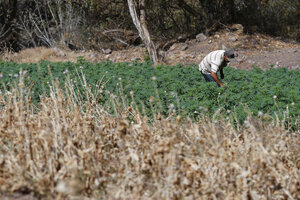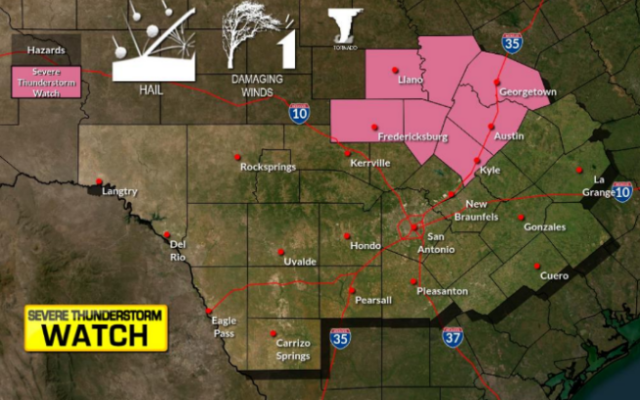Growers fret as Mexico moves to legalize marijuana

BADIRAGUATO, Mexico (AP) — For the first time that María can remember, half of her marijuana harvest is still in storage on her ranch in Mexico’s Sinaloa state months after it should have been sold.
Sitting in her wooden house tucked into the same mountains that produced some of the world’s most notorious drug traffickers, including Joaquín “El Chapo” Guzmán, the 44-year-old mother of four thinks she knows why: expectations Mexico will soon legalize marijuana.
“It has never happened to us where we harvest and have it (stored) in sacks,” said María, who asked that her full name not be used and her exact location not be revealed because in the mountains surrounding Badiraguato, where organized crime controls everything, misspeaking can be dangerous.
Mexican legislation awaiting final Senate approval, which now may not come before September, would legalize pot production and sale for recreational use while creating a private market regulated by the government. Medicinal use is already legal.
The effort has generated uncertainty among families who have cultivated the crop for generations and throughout the trade. Growers expect the price of marijuana to drop further and think their trade will become economically unfeasible. They say in the past five years, the price they get has been halved. Everyone is waiting to see how the drug capos will respond to a new legal business. Meanwhile, half of María’s crop sits unsold.
Marijuana has become less lucrative each day compared to the cartels’ revenue from synthetic drugs like fentanyl. Demand and the price for pot fell when several states in the U.S. legalized it, though Mexico is still the top foreign supplier to U.S. consumers, according to a recent report by the U.S. Drug Enforcement Administration.
Here in Sinaloa’s mountains, some farmers have stopped growing marijuana. Others are focusing on higher-quality strains that fetch a higher price or they continue to grow it, but along with opium poppies, hoping at least one of them will keep them afloat.
María has been working between the tall leafy plants since she was 16 and says she even fell in love among them. At her house, surrounded by fruit trees and chickens, the family doesn’t lack food, but the income from marijuana pays for everything else over the course of the year, from clothing to cellphones to her children’s schooling. Her eldest just got his degree in computer science.
For her family and many others, the concern is not whether marijuana is legal, just that it keeps providing income.
“Since we heard they were going to legalize (marijuana) we began to make the poppy plots larger,” María said. But that didn’t work.
In February, their main poppy crop was destroyed. They had planned to live off the revenue from it for a year. Hearing the military helicopters approach, María took her picture of Saint Jude, the patron saint of lost causes, off the wall and ran to the field to place it among the red flowers. The saint couldn’t save them from the effects of the herbicide.
Two months later, María’s husband worked among marijuana plants more than 3 feet high planted among the dead poppies. It’s all they’re able to water with drip irrigation fed by extra water from the house.
“This little plot is from another seed and it is going to sell, they say, because it’s better quality,” María said.
The marijuana they managed to sell from the previous harvest yielded $500, or about $25 per kilogram. In contrast, the poppies that were destroyed would have produced about $5,000 worth of opium gum.
The drug trade has brought a lot of money to inhabitants of these mountains over the years, but also a lot of problems.
María remembers the years of bonanza when the family was able to buy some cows, which were later sold to pay for her children’s education. Her husband recalls periods of violence when rival groups killed and terrorized locals in an attempt to control the area.
The couple wants a different future for their kids. But asked if she can imagine a time when the mountains are no longer tied to drug trafficking, María’s 18-year-old daughter says, “never.”
The ties are strong and numerous.
Years ago, María’s husband smuggled marijuana across the U.S. border in a backpack. Her daughter’s boyfriend moved marijuana from Phoenix into the U.S. interior.
As María prepared chicken soup, “narcocorridos,” the ballads chronicling the exploits of drug traffickers, sang of the “heirs of Mr. Guzmán,” who is serving a life sentence in the U.S.
Guzmán’s sons control this area, according to experts.
Five days after an AP team visited the area, Mexican marines carried out an operation near the birthplace of Rafael Caro Quintero, another notorious trafficker released in 2013 from a Mexican prison where he was serving time for the murder of a DEA agent. But otherwise there was little government presence and the area appeared calm, though watched closely by lookouts.
One of the arguments Mexican politicians cite in their efforts to legalize recreational use of marijuana is reducing violence. Some experts are not so sure this will happen, but say shrinking the black market and the income of organized crime would be positive.
The objective “is not to end the illegal market, because that’s not going to happen in the first years,” but rather reduce it as much as possible, said Zara Snapp, an international drug policy consultant and co-founder of Instituto RIA, a public policy think tank in Mexico.
Nongovernmental organizations like Snapp’s believe there needs to be a stronger social justice component to Mexican legislation.
“If the communities decide not to (move to the legal market) it is because there aren’t sufficient economic reasons,” she said.
While María prays to St. Jude and hopes her small remaining plot of marijuana carries her family through, in another part of the mountains a skinny 39-year-old man has been growing a strain of marijuana that sells at 10 times the price of the traditional Mexican marijuana because it has a much higher psychoactive content.
If the man, who also requested anonymity, is able to get two harvests — and the army doesn’t find it like it did two years ago — he will have 110 pounds of high-quality marijuana that should yield $15,000. It’s not easy money.
“From the time you plant until you sell it, you’re fighting,” he said.
Water is scarce. He pays two workers to be on the ranch, look after the plants and later carefully cut the the strong smelling reddish buds that he and others will then weigh and package.
The man has been working in marijuana since he was 9 years old. His partner also comes from the business, but a different branch. “My dad was a money launderer,” he said casually.
Decades ago, marijuana was such big business that it was carried out of the mountains on airplanes that landed on dirt roads. Now the man and his partner drive it to the state capital of Culiacan and sell it there.
“You have to go to who’s in charge and give him half or sell it all to him” to avoid problems, he said.
For the man — as with María — the important question isn’t legalization but the numbers, income numbers.
“If they pay me the same — or almost — being legal, well great. You’ll work more at ease,” he said.
You Might Also Like



